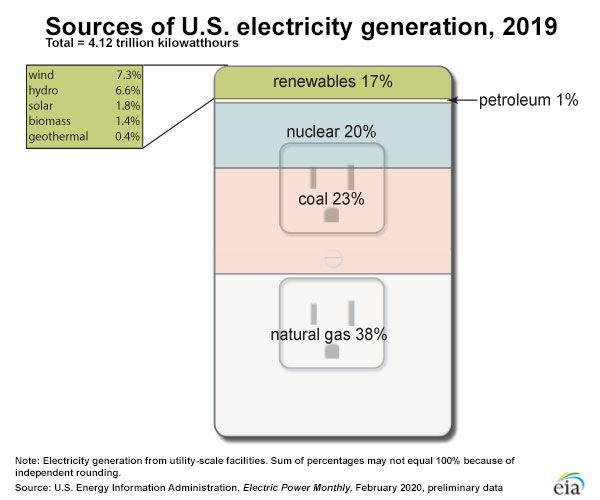A U.S. Department of Energy study has found tremendous opportunities for the Appalachian Basin because of the shale gas revolution and the region’s abundant coal reserves. According to the report, a petrochemical hub and a next-generation manufacturing center could develop in Appalachia, a region including West Virginia and parts of Kentucky, Ohio, and Pennsylvania, because of its abundance of natural resources and proximity to markets in the U.S. East Coast and Midwest. The potential for downstream manufacturing using petrochemical derivatives including ethylene and plastic resins is enormous. During the coronavirus pandemic, petrochemicals have been and are still used to produce personal protection equipment including latex gloves, N95 masks, and plastic face shields that have been critical for front-line workers.
The Appalachian Basin is the number one source of low-cost natural gas in the United States because of hydraulic fracking and horizontal drilling technology and it is becoming a major producer of natural gas liquids, including ethane, propane, and butane. Natural gas from the Marcellus and Utica shale basins are increasingly fueling power plants to produce electricity and is used in glass, steel, aluminum, and cement manufacturing and as a feedstock for fertilizer, chemicals, and plastics.
But, the Biden-Harris ticket wants to call an end to low-cost natural gas produced in shale basins by banning hydraulic fracturing. Biden indicated that he would ban new hydraulic fracturing in his debate with Bernie Sanders in March 2020, although he would not admit to the ban plan when campaigning in Pennsylvania this year. Also, in September 2019 during a CNN town hall event, Kamala Harris said “There is no question I am in favor of banning fracking.”
Current and Future Potential
Appalachia was the birthplace of the U.S. petrochemical manufacturing industry in the early 1900s, and with Appalachia’s abundance of gas and natural gas liquids, the industry is returning. Currently, ethane production in the Appalachian Basin totals about 250,000 barrels per day. But by 2025, that volume is projected to more than double to 640,000 barrels per day. Royal Dutch Shell is planning to use the ethane in an ethane cracker that it is building in Beaver County, Pennsylvania, and PTT Global Chemical has plans for a similar facility in Belmont County, Ohio. The facilities together represent an investment of $16 billion to over $20 billion and will create 1,200 permanent jobs and 12,000 construction jobs.
With propane production expected to reach 300,000 barrels per day by 2025, the opportunity exists to develop infrastructure to convert propane to polypropylene plastic resin. There are also opportunities for butane, which is used in refineries, and ammonia, urea, methanol, and ethylene production. Each of those facilities would produce petrochemical derivatives that are needed for the production of chemicals, plastics, solvents, synthetic rubber, antifreeze, pharmaceuticals, and other products. Currently, the Appalachian Basin annually produces $30 billion in plastic consumer goods.
According to the American Chemistry Council, the possibilities in the petrochemical sector could result in an economic expansion of $28 billion a year and the creation of 100,000 jobs in the Appalachian region.
But, the Biden-Harris ticket would call an end to this potential shale gas renaissance because their plans would destroy the shale gas industry, which now provides the vast majority of our natural gas. Capitalizing on the benefits of the shale gas revolution requires maintaining the region’s ability to drill, produce, and transport natural gas, which besides allowing hydraulic fracturing, would include streamlining the siting and permitting of pipelines and accelerating research and development that offers the potential to double shale gas wellfield productivity.
Biden’s climate change plan proclaims “that every federal infrastructure investment should reduce climate pollution” and would require “any federal permitting decision to consider the effects of greenhouse gas emissions and climate change.” That is an indication Biden would make it difficult for developers to obtain federal permits to build fossil fuel infrastructure such as pipelines. To slow the permitting process, Biden could require onerous and lengthy reviews to evaluate whether a project’s economic impact is outweighed by its potential emissions impact, i.e., he could make the process so burdensome and expensive for pipeline developers that they cancel the project. This approach should be contrasted with China’s plan. China recently formed a $56 billion conglomerate to build and operate the country’s growing natural gas pipeline system.
Conclusion
Appalachia has been hurting from the decline in coal use due to competition from low-cost natural gas and due to state mandates and federal and state subsidies for renewable technologies. Its proud manufacturing history has been eroded by the offshoring of those industries to China and other countries. However, the region could have an economic renaissance from low-cost natural gas and natural gas liquids production, and petrochemical and manufacturing development, which is already beginning and of which more is planned. But, that boom can only occur if hydraulic fracking is allowed to continue to be used and regulations prohibiting infrastructure development are streamlined. The Biden-Harris ticket would not allow Appalachia to benefit from such a boom that the U.S. Department of Energy indicates could result from such a private/public partnership.
*This article was originally published by the Institute for Energy Research.
For more information on these issues check out AEA’s Vote Energy 2020 election hub.


